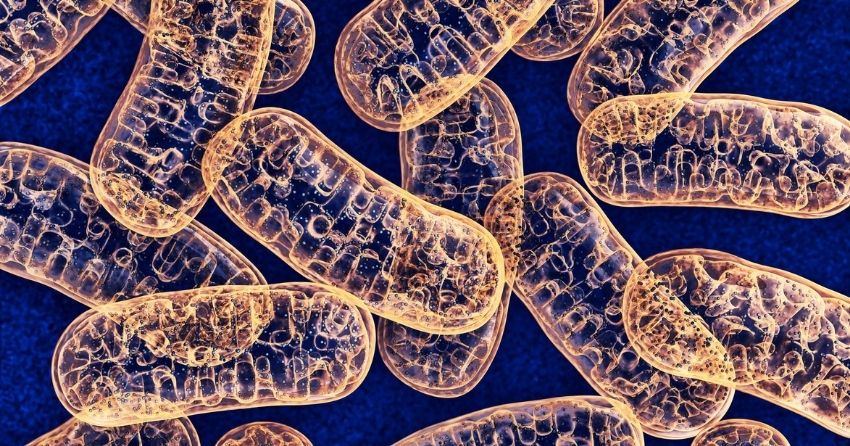New Compound Targets Mitochondrial Free Radical Production and Supports Metabolic Health

-
Free radicals cause oxidative stress, which is a major contributor to aging.
-
A leading cause of free radical development comes from mitochondrial energy production—so researchers uncovered a new compound that targets mitochondrial free radicals at the source, with a pill (studied in mice) that selectively keeps them from being produced in the first place.
-
This compound (named S1QEL1.719) plugs a specific site so that the mitochondria doesn't produce free radicals, without hindering its critical function of energy metabolism
-
In mice, this pill also improved metabolic health by fighting insulin resistance, improving blood glucose levels, and decreasing fat accumulation.
This article was posted on ScienceDaily.com:
Mopping up free radicals with antioxidants was the rage in the 1970's; people were taking large, sometimes massive doses of various general antioxidants, including vitamins and minerals, to try to remove harmful byproducts of energy metabolism. The method was supposed to blunt the effects of aging and stave off chronic disease. The strategy didn't work, and in some cases, it caused harm because untargeted antioxidants also compromised beneficial cellular signaling pathways. Over time, this area of research went on the shelf as mitochondrial theories of disease and aging fell into disfavor.
But research at the Buck offers a new way to deal with free radicals: rather than mop them up, take a pill that selectively keeps them from being produced in the first place. Building on this work, collaborative research between the Buck and Calico Labs, recently published in Free Radical Biology and Medicine shows that specifically inhibiting free radical production at a particular mitochondrial site prevents and treats metabolic syndrome in mice, by preventing and reversing insulin resistance.
"We think that mitochondrial radical production drives many chronic diseases of aging, and that blocking the production of free radicals is a viable disease-treating and anti-aging intervention," said Martin Brand, Ph.D., Buck Professor Emeritus and senior investigator of the study. "We've found a way to selectively keep problematic free radicals in check without compromising normal energy production in the mitochondria. These compounds act like a cork in a wine bottle. They plug a specific site so that it doesn't produce free radicals, without hindering the mitochondria's critical function of energy metabolism. We look forward to continuing this groundbreaking area of research."
The orally bioavailable compound that has been developed, S1QEL1.719 (a new "S1QEL" -- Suppressor of site IQ Electron Leak), was given both prophylactically and therapeutically to mice fed a high-fat diet that causes metabolic syndrome. Treatment decreased fat accumulation, strongly protected against decreased glucose tolerance and prevented or reversed the increase in fasting insulin levels by protecting against the development of insulin resistance.
Acting on mitochondrial complex I highlights potential interventions for other conditions
S1QEL1s act on site IQin mitochondrial complex I. (The mitochondrial electron transport chain consists of four protein complexes integrated into the inner mitochondrial membrane. Together they carry out a multi-step process, oxidative phosphorylation, through which cells derive 90% of their energy.)
"S1QELs don't sequester oxidants or radicals. Rather, they specifically inhibit radical production at the IQ site on complex I without interfering with other sites," Watson said. "So the normal redox signaling that we require in our cells will continue. S1QELs just modulate that one site. They are very clean, very specific, and do not disrupt mitochondrial functioning like inhibitors of mitochondria do."
Brand says the data shows that free radical production from complex I is an essential driver of insulin resistance and metabolic syndrome, a major disease of poor lifestyle choices and of aging. He says this feature is a strong reason to revisit the mitochondrial theory of aging. "These compounds fine-tune mitochondrial production of free radicals," he said. "And it's really interesting; just inhibiting this specific site improves the whole redox environment and prevents metabolic disease, and that is amazing."
Story Source:
Materials provided by Buck Institute for Research on Aging. Note: Content may be edited for style and length.
Journal Reference:
- Mark A. Watson, Harmanmeet Brar, Edwin T. Gibbs, Hoi-Shan Wong, Pratiksha A. Dighe, Bryan McKibben, Stephan Riedmaier, Amy Siu, James S. Polakowski, Jason A. Segreti, Xiaoqin Liu, SeungWon Chung, Y. Marina Pliushchev, Nathan Gesmundo, Zhi Wang, Timothy A. Vortherms, Martin D. Brand. Suppression of superoxide/hydrogen peroxide production at mitochondrial site IQ decreases fat accumulation, improves glucose tolerance and normalizes fasting insulin concentration in mice fed a high-fat diet. Free Radical Biology and Medicine, 2023; 204: 276 DOI: 10.1016/j.freeradbiomed.2023.05.022





